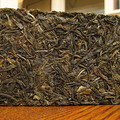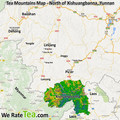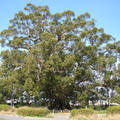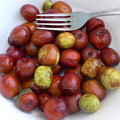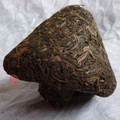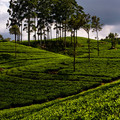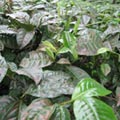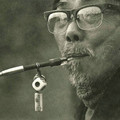Learning how to identify gu shu & make maocha - The Tea Urchin
„Mr. Gao showed us how to identify gu shu (ancient tree) tea leaves by looking at their texture, rubbing them between your fingers, and eating them raw. Old tea trees produce thicker, more leathery leaves that don’t easily come apart when you rub them. And gu shu buds should be white & shiny. When you chew them, the flavor is very bitter but there is also a strong sweet fragrance, and the juice is relatively easy to swallow. Tai di cha (terrace plantation tea) is also bitter but with a strong, lasting astringency on the sides & front of the tongue, and the juice is harder to swallow.“

Quotes Tags: Pu-erh, Gushu, Tea production, Experiencing tea
- Discussion: 0 comments
- Write a comment
Teas - Pu-erh
2007 Jingmai Qiao Mu “0502”
 1 review
1 reviewUse Jingmai mountain arbor (Qiao Mu) tea which picked before Grain Rain (mid-April) as...
2015 Spring Man Nuo Gu Shu Mao Cha 50g
 0 reviews
0 reviewsMan Nuo ancient tea gardens, at an altitude of 1266 meters. The tea trees are really...
2007 Boyou "Man Lu Da Shan" Meng Song
 2 reviews
2 reviewsBoyou tea factory was started by yet another ex-Menghai tea blender. Boyou is well...
2014 Laos Ban Komaen (Blue) Gu Shu Raw
 0 reviews
0 reviewsPhôngsali is a province of Laos, bordering Yiwu, Yunnan. It is located high in the...
2006 Longyu Brand Bulangshan Jin Cha Raw
 1 review
1 reviewRaw Jin Cha is especially for Tibetan market, used to be mixed with milk, it is very...
2013 Spring Mengsong Baotang Gushu Maocha
 1 review
1 reviewMengsong is one of the oldest ancient tea area in Menghai. Baotang old village is...
Quotes - Pu-erh
„This process was first developed in 1972 by Menghai Tea Factory and Kunming Tea Factory] to imitate the flavor and colour of aged raw pu-erh, and was an adaptation of wet storage techniques being used by merchants to falsify the age of their teas. Mass production of ripened pu'er began in 1975. It can be consumed without further aging, though it can also be stored to "air out" some of the less savoury flavors and aromas acquired during fermentation.“
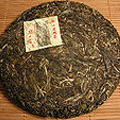
Quotes Tags: Pu-erh, Shu - Ripe Puerh
Video - Pu-erh
Theme
Teas
2012 EoT Bulang Puer Tea 400g
 1 review
1 reviewThis tea was a bit of an experiment for us. We'd found 2 different maochas from Bulang mountain, which were...
Shu Tuocha 2003
 1 review
1 review„tailor-made” private production “Zhong Cha Gong Si” in Dayi (Menghai tea factory). This tea is made by a...
Lao ManE 2013 autumn
 1 review
1 reviewThe LaoManE rules over this autumn teas. In this village you may find really bitter tea and also sweet teas...
Tea by region
We will help you with tea selection.
Do you like quality loose tea?
We will help you to find the right one for you. Be inspired by tea ratings of other tea lovers. Rating stars could help you.


Review your cup of tea.
Review the tea you are drinking and help other tea lovers to find the right cup of tea.






 Shops
Shops Share on Facebook
Share on Facebook






